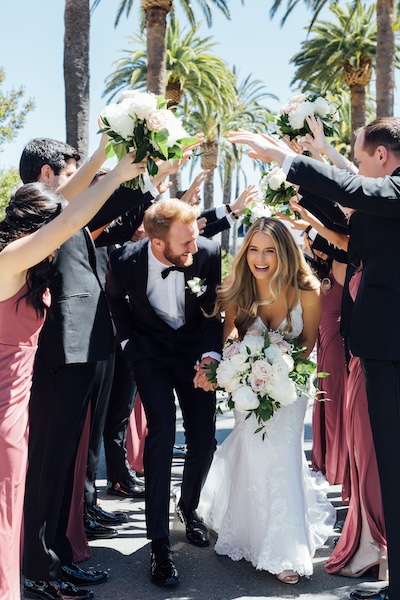Business + Marketing
One of the best ways to get new clients is to be found on search engine sites such as Google, Bing and Yahoo. Numerous studies have shown that very few people go below the first five search results. The algorithm that decides how sites are ranked on Google and other search engines is constantly evolving. SEO, therefore, has become much more complicated and preferential than in previous years. However, all the changes that Google implements tend to prioritize true content benefiting the user and not tricking the search engine through deceptively manipulative SEO. Here are ten ways to rank higher.
Post smart content relevant to your target audience.
The goal is to keep your visitors on your site for a while and to not give them a reason to click the back button and leave your page. It’s important to create content that will draw in the visitor to keep looking through your website. Create content that is unique, thorough, engaging and informative. To help your visitors find more content on your site, it’s important to include links on your pages to other content on your site. It’s ideal to place the links higher on the page, which emphasizes their importance to Google. Having those cross-links will assist with smart content architecture and keep your visitors engaged. If all is done correctly, the related links will add value to the audience. Keeping visitors on your site longer helps build your website’s topical authority (in Google’s eyes) around the subjects. When using links on your pages, make sure that the text of those links is related with your primary and secondary target keywords.
Up your search listing with schema.org and rich snippets.
Help Google and other search engines make your site easier to index by implementing schema.org on your site. In addition to telling the search engine what all the pieces of your site mean, schema.org markups will help Google create rich snippets of your site in search results. A rich snippet is any additional information that is provided about your site in SERP (Search Engine Results Page). A well-structured rich snippet will entice the searcher to click on the link. Rich snippets have information about your site, the rating of your business, pricing, etc. All this information is implemented on your site with a schema markup—standardized structured data describing your site’s content. On WordPress sites, this can be done with a variety of plug-ins, like WP SEO Schema. The goal is to make your search result more attractive and more informative to the users so they can judge if your listing is the one they are looking for.
Don’t lose your visitor before your site loads.
Let’s face it, we have all become less patient. Having a slower site means poor user experience. According to kissmetrics.com, sites that load in less than 5 seconds on mobile will see 25 percent more retention of users. Optimally, your site should load within 3 to 5 seconds. Anything longer than that
and you will be losing visitors before they can even see your site.
The number one reason for a slower page load are images that haven’t been optimized. As photographers, we are guilty of wanting to upload the highest resolution images so that our site visitors see them in their full beauty. However, for your site to load fast, you have to reduce all the images to the lowest resolution required by the site design/template, Google PageSpeed Insights and Pingdom Tools are some of the best resources to check load speed and identify potential problems on your site. Smush Image Compression and Optimization is one of the best WordPress plug-ins for optimized images.
Do your homework and research for primary and secondary keywords.
The latest changes to Google’s algorithm allows targeting multiple keywords per post or page. Those keywords could be variations of the same term or closely related to each other. For example, your primary keywords could be “engagement session” and the secondary keyword could be “sunset engagement session,” “engagement session on the beach,” “beach engagement session,” and so on.
Describe your photos.
Even though nowadays Google can better recognize photos, it’s still very important to describe your visuals and photos on your site. Every photo on your site should be properly described so that Google can properly index and classify it. The best way to do it is to provide text in the ALT attribute of the IMG tag (the HTML tag for images) and to name each image with a meaningful name. For example, IMG100-1.jpg is meaningless to Google. But Bride-Getting-Ready-San-Diego-Hyatt.jpg as a file name and “Bride putting her wedding dress on in Grand Hyatt Hotel downtown San Diego” as the ALT tag are much more meaningful to Google and will help your photos rank higher in its results.
Promote links to your site. One of the best ways to gain links is to submit your work for publication. Choose well-known publications that get a high volume of traffic. Once you are published, make sure proper credit is given with a link to your site. Another great way to build links from reputable sites is to submit articles or content to sites and online magazines related to your work. The more quality sites that link to your content, the higher your site’s authority will become.
Work with influencers who can amplify your content.
They could be your clients’ influencers, such as fashion bloggers, wedding bloggers, wedding planners, makeup artists, etc. Collaborate with them to create content on your site. Then they will have good incentives to spread the word about what you have on there. Be cautious, though, that the content you post is unique. Avoid content that has been posted on another site.
Create compelling titles and meta descriptions.
While titles are self-explanatory, meta descriptions are often misunderstood. The meta description is a summary of a specific page or post. Even though they do not directly affect SERPs, they may influence whether somebody clicks on your link in the link results. This is called click-through rate. It’s very carefully measured by Google, and it does influence future search results. The more people that click on your links in search result pages, the higher you will rank in future results. Since the goal is to attract the user to click on your link, the title and meta description should always be written with the user first in mind and the search engine’s keywords second.
Make sure your site is secure.
If you collect any information from your visitors, your site should be secure. To make your site secure, you must obtain an SSL certificate and implement HTTPS protocol on your site. This sounds very technical and confusing, but luckily most hosting providers will do it for you and often at no or low additional cost. To check whether your site is secure, go to your URL and see whether you see HTTP or HTTPS in front of the address. If your site is not secure (using HTTPS), contact your hosting provider and make sure to update your site and secure it right away.
Be mobile and don’t get penalized by Google.
Make sure to have a responsive mobile site. Recent analysis reports reveal that mobile users represent 60 to 80 percent of visitors on websites. On our own site, we see about 50 percent of mobile visitors. A responsive site that renders properly on mobile devices is simply a must. Ask your friends and family to go on your site via their phones and give you feedback on how easy it is for them to navigate it. Google penalizes sites that are not mobile-friendly.
As search engines become more and more sophisticated, the best strategy for better ranking in 2018 is to focus first on content that will benefit your target audience. Make the content interesting, unique and well-organized so your visitors spend a significant amount of time on your site and benefit from your content. It’s rewarding to put more effort into what you publish than take shortcuts that can penalize your site in the future.
Related: Is Blogging Worth It Anymore?
How To Win At Social Media Advertising








